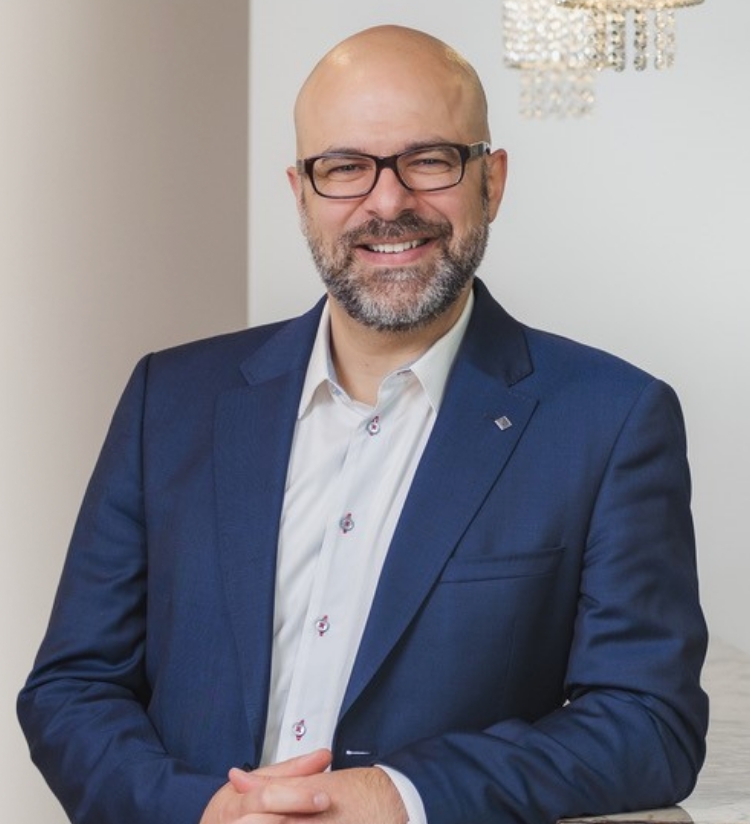Anesthesia
Anesthesia is a key factor that our facial plastic surgery patients in Montreal consider when making a decision about surgery. The ideal anesthesia method allows the patient to undergo surgery without pain, being asleep and comfortable, and of course safe with minimal risks.
At our center, we offer two options for anesthesia:
Local anesthesia similar to what takes place at the dentist’s office. This is offered in very specific circumstances.
Sedation (“twilight”) anesthesia is the most common method we offer. This involves the administration of a sedative to make the patient sleep while breathing on his/her own.
Fortunately, Dr. Samaha and our surgical team possess the proper training and experience to perform all our facial plastic surgery procedures comfortably and safely using one of these two methods of anesthesia, thereby avoiding general anesthesia.
The anesthesia we offer has several benefits for our facial plastic surgery patients. It avoids the “invasiveness” of general anesthesia and its associated risks and inconveniences. As a result, recovery is faster; the coughing, nausea, and vomiting sometimes associated with general anesthesia are avoided; and the time necessary to complete the procedure is decreased.
This anesthesia approach, combined with Dr. Samaha’s use of minimally invasive surgical techniques diminishes swelling and bruising after surgery, allowing patients to recover faster and return to daily activities sooner. Invariably, patients who have opted for this approach have reported a positive and comfortable experience.
Meet Dr. Mark Samaha
A double board-certified otolaryngologist whose practice focuses exclusively on facial plastic surgery, Dr. Samaha is highly qualified in facial aesthetics. Learn more about our physician and how he’s carefully refined his skills to sculpt your beautiful face.

Meet Dr. Mark Samaha
A double board-certified otolaryngologist whose practice focuses exclusively on facial plastic surgery, Dr. Samaha is highly qualified in facial aesthetics. Learn more about our physician and how he’s carefully refined his skills to sculpt your beautiful face.
Local anesthesia (without sedation)
This consists of injecting local anesthesia medication (again, similar to the dentist’s office) to numb the area to be operated. We offer this option to some patients undergoing specific procedures. Examples include the lip lift procedure, upper blepharoplasty, and chin implants. A discussion between Dr. Samaha and the patient will help determine if the patient is a suitable candidate to undergo surgery using this method, and of course, if it is the patient’s preference.
Sedation anesthesia (“twilight” anesthesia, conscious sedation)
This is the main method of anesthesia used by Dr. Samaha for all facial plastic surgery procedures, including rhinoplasty, facelift, brow lift, blepharoplasty, chin implant, and others.
This type of anesthesia consists of administering sedative and pain killer medications to induce sleep where patients are in a dream state, unaware of their surroundings, but breathing on their own, without the aid of a breathing tube and without an anesthesia machine to pump air into the lungs. The medication is dosed according to each patient’s particular needs, (weight, response to sedation, level of anxiety) type of operation and length of surgery.
Once the sedation has taken effect and the patient has drifted into the “twilight” sate of sleep, Dr. Samaha uses local anesthetic to numb the area to be operated and proceeds with the surgery. The patient feels no pain and is sleeping as the procedure is performed.
While Dr. Samaha is performing the surgery, the patient is constantly monitored throughout the procedure. In addition to monitoring the usual heart rate, blood pressure, and oxygen level, the patient’s level of sedation (sleepiness) is closely watched by Dr. Samaha and the nursing staff. This allows them to control the level of sleepiness by administering additional sedative medications if necessary to keep the patient asleep.
In this way, the degree of sedation or “sleepiness” can be tailored to insure that the patient is sedated and unaware throughout the procedure. Patients usually do not remember the procedure.
Anesthesia
Why does Dr. Samaha not use general anesthesia?
General anesthesia is more invasive as it places more “stress” on the system. Although it is generally safe, when complications do occur with general anesthesia, they can be serious. In addition, the swelling is generally more pronounced and bruising can also be more significant, prolonging patients’ return to daily activities. For those reasons, we do not use general anesthesia at our center.
FREQUENTLY ASKED QUESTIONS
Am I awake during the surgery with sedation anesthesia?
No. The degree of sedation or “sleepiness” can be adjusted and tailored to each patient. Patients usually prefer to be unaware and asleep. Therefore, the anesthesia is tailored to insure patients are sleeping comfortably and painlessly during surgery.
Do I feel any pain?
No. The area being operated is completely numbed at the start of surgery and therefore, in addition to being asleep, patients do not feel any pain at all.
Is sedation anesthesia widely used?
Although this type of anesthesia has been used for decades, it is becoming somewhat of a lost art, with most surgeons in North America performing surgery under general anesthesia. The reason for this is that additional training and experience is required to perform surgery with sedation anesthesia, and many surgeons have not acquired this experience and are therefore not comfortable performing surgery using twilight anesthesia.
Would you like to learn more about Dr. Samaha’s approach to anesthesia? Request your consultation online or call our office at (514) 613-3004 to book your appointment.
